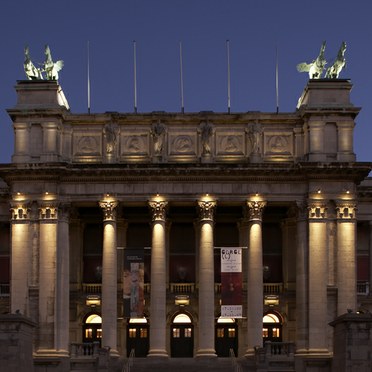Royal Museum of Fine Arts, Belgium
- Lamp efficacy
Lamp efficacy
Ensuring the lamp efficiently converts electricity into light (lm/W).
- Ballast classification
Ballast classification
Controlling the electricity supply to the lamp (Energy Efficiency Index).
- Luminaire distribution
Luminaire distribution
Controlling light emission using optics which bend and shape the light to the correct location.
- System efficacy
System efficacy
Combining optical and thermal control within the luminaire (luminaire lm/W).
- Presence/absence detection
Presence/absence detection
Providing lighting only when it’s needed.
- Daylight detection
Daylight detection
Reducing waste light during daylight hours.
- Constant illuminance
Constant illuminance
Producing the correct lighting levels for the duration of the maintenance period.
- Task-scene setting
Task-scene setting
Allowing the user to set scenes and adapt the lighting to different tasks.
- Timed off
Timed off
Automatic cut-off to turn all lights off during unoccupied hours.
- Task lighting
Task lighting
Lighting task areas with the correct amount of light.
- Zoning of lighting
Zoning of lighting
Zoning lighting in accordance to occupancy patterns or window location.
- Maintenance schedule
Maintenance schedule
Tailoring maintenance schedules in accordance to product age, performance and environment.
- Waste light
Waste light
Eliminating waste light which does not hit the intended target.
- Reflectance
Reflectance
Taking advantage of light which is reflected from the surface within the space.
- Visible smart metering
Visible smart metering
Enabling results of actions to be quickly seen as increased or decreased energy use to encourage responsible energy consumption.
A temple for the art of lighting
A selection of Thorn's exciting exterior luminaires - Band, Cesar and Milo - have been used to illuminate Antwerp's Royal Museum of Fine Arts (Koninklijk Museum voor Schone Kunsten).
This remarkable 19th century temple of art is decorated with Corinthian columns and adorned by two large statues, depicting two-horse chariots. The museum itself displays a fine collection of Flemish paintings including work from Rubens, Van Dyck, Jordaens and Brueghel.
The architect wanted to create a hierarchy of illuminance without overlighting, whilst paying special attention to focal points such as the chariots, which serve as the museum's logo.
LED Band luminaires, many DALI controlled, are used for the base of the chariots, above the entrance doors and for backlighting the pink galleries that house the busts - each figure being lit from above by two Milo LED spotlights.
The columns and verticals are lit by Cesar projectors (35W HIT), augmented by various Contrast (35W & 70W HIT) and LED MiniPinspot spotlights. A mix of warm (3000K) and cool (4200K) colour temperature lamps are used to vary the colour appearance.
The overall result is a sensitive scheme which has unity and beauty. At the same time electrical consumption has been halved.

